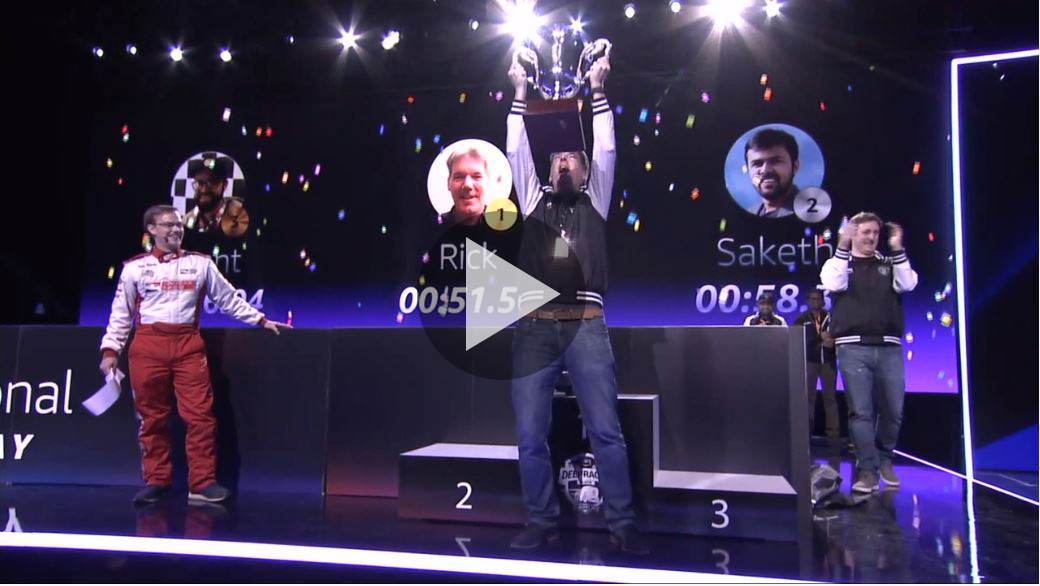5 RTLS Technologies
1. Infrared RTLS
Infrared works the same way as your television remote. An infrared tag (i.e., a remote) placed on an asset flashes a unique infrared ID at a fixed interval, which is picked up by a ceiling-mounted infrared reader (i.e., a TV). There needs to be a visual path between the tag and the reader—but, much like your TV remote, they don’t have to be perfectly aligned to register.
Benefits
- It’s nearly impossible to get a false reading using infrared RTLS (unless someone attacks your system).
- Infrared tags are inexpensive.
Considerations
- Cost is the primary downside of infrared RTLS. It’s very expensive to install because it requires newly-installed infrastructure in every room. As a result, it’s not ideal for retrofits, and is better suited for new construction.
- Infrared tags transmit light signals, so battery life is a concern.
- It’s harder to track items as they move through a building, as this would require readers in the hallways as well as in rooms. For this reason, infrared RTLS is best suited for capital assets and is not ideal for personnel tracking.
Technology To Consider
2. WiFi RTLS
WiFi RTLS technology uses tags that transmit a WiFi signal to multiple access points throughout the building. Using differential-time-of-arrival methods, the receivers are able to locate the tag.
Benefits
- If you deploy WiFi-based RTLS, you can often use existing WiFi structure with firmware changes.
- It is more accurate than proximity-based RTLS options because it uses time-of-flight measurements with a relatively wide bandwidth. Accuracy indoors is related to signal bandwidth, so if you’re doing 80 GhZ of 5-GhZ WiFi, you can get accurate location positioning within a few meters.
Considerations
- WiFi-based RTLS tags are the most power-hungry, the largest in size, and the second most expensive of all RTLS technology. For example, an AeroScout tag costs about $60, so using it to track disposable or ad-hoc assets isn’t financially realistic.
- Installation can be difficult. For example, during deployment, you have to survey the building by walking around with devices to determine how to calibrate between the WiFi access points. And because WiFi-based RTLS rides on top of the IT structure, your IT team will have to be heavily involved with getting it up and running. Additionally, the access points to support a WiFi RTLS system are multi-thousand dollars a piece.
- You often have to license the location software to feed into the location engine, which can increase the price.
- While RTLS solutions don’t send much data and aren’t connecting to WiFi as much as pinging it, there are still security concerns about having unmanaged WiFi end nodes on your network.
Technology To Consider
3. Ultra Wide-Band (UWB) RTLS
Ultra wide-band RTLS is the gold standard in terms of location precision. It uses small, low-powered tags that transmit an ultra wide-band signal using a spark-gap-style transmitter. This instantaneous burst of energy creates a very wide signal and transmits across gigahertz of spectrum.
Benefits
- This is the most accurate of RTLS solutions. The RF chirps it sends out are barely detectable, but are able to be picked up by ultra wide-band receivers—which you place throughout the building you’re monitoring. And these chirps triangulate down to less than a meter.
- The infrastructure used for UWB can also be in mesh networks, so the tag location data can often transit the UWB network—giving it standalone network capability.
Considerations
- Accuracy requires a tremendous number of costly readers. In fact, every tag needs 3-5 readers to get an accurate location.
- This is the type of technology Amazon uses in its warehouse to track every box and robot, down to the centimeter. But not every organization wants or needs such exact location positioning, which makes the expense unjustifiable.
Technology To Consider
4. Passive RFID
Passive RFID, which employs simple, battery-free tags and high-power readers, is commonly used in places like libraries and retail stores. The readers send out a low-frequency radio signal that transmits so much energy over the air that the tag’s collector antenna picks up its radio waves with brute force. The tag then transmits back to the reader using a different frequency.
Benefits
- A passive RFID sticker tag is extremely inexpensive—as low as 10 cents.
- The inexpensive tags last forever.
Considerations
- While the tags are inexpensive, the readers are not. And unless you’re using chokepoint RFID (which is what storefronts with large resonators use), you will need a lot of them for location tracking. In fact, you need to position these readers every 10-15 feet—which isn’t often realistic.
- To pick up tag signals properly, passive RFID readers radiate a great deal of energy, which companies are typically wary of.
Technology To Consider
5. Active RTLS
Active RTLS uses battery-powered sensors that connect to various access points throughout the building and transfer data to the cloud or an on-premise server. These solutions use a variety of radio technologies which can impact system and operational costs.
Benefits
- Depending on the underlying network architecture, there can be varying levels of IT integration.
- This is one of the least expensive RTLS options.
- You don’t have to cover the whole building. You can start in one area, or with one function, and create value before scaling. This “crawl, walk, run” approach with testing and deploying isn’t available with most integrative RTLS solutions.
Considerations
- Location accuracy of active RTLS is only as granular as the number of readers you have, so many readers are necessary for a high level of accuracy. Potential users must consider that there is a major cost trade-off between the pinpoint accuracy of ultra wide-band and the room-level accuracy of active RTLS.
- Active RTLS can be prone to false positives. For instance, if you have a thin wall with a bed in front of it, the reader in the next room may be louder, making a particular item in room A appear to be in room B.
Technology To Consider








